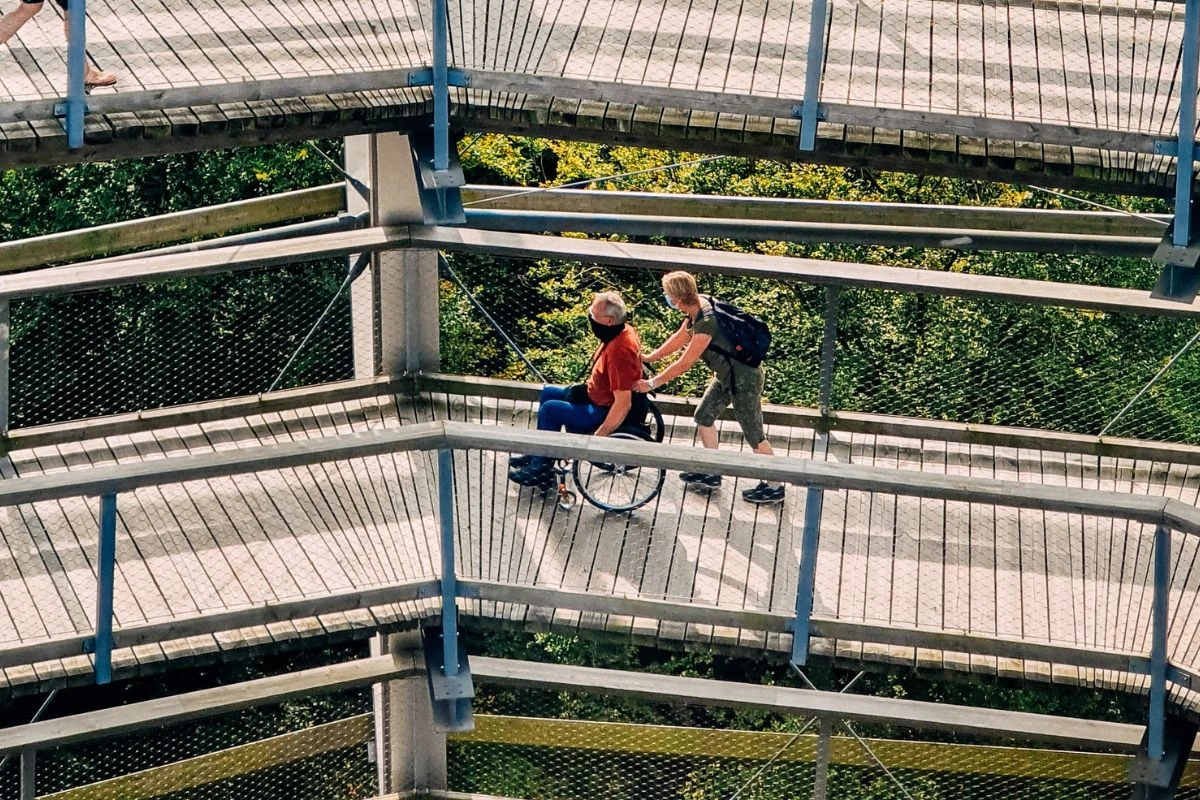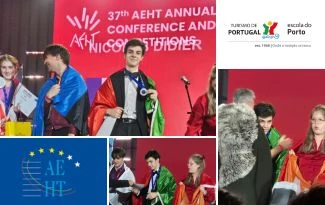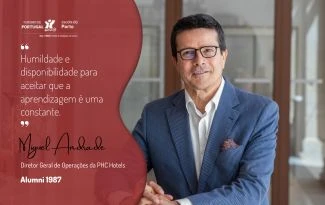Transforming the usual narratives around accessible tourism: from awareness to action

The association around disability and vulnerability as inherent to the human condition and, paradoxically, the scarcity of facilitators to mitigate the effects of barriers that hinder the quality of life of individuals diagnosed with disability is exposed as a problem to be solved. However, the “problem” is often associated with stereotypes related to the lack of knowledge about disability, since it is a social construct.
The notion of disability has been a subject, over the years, to a vast process of continuous definitions and redefinitions, due to the preponderance of influential myths in the way people interact with individuals related to that concept. Therefore, it is important to remember that the increase in average life expectancy, linked to the particularities of the human condition, reveals the possible metamorphosis of each individual into a potential human being with a disability. We are, therefore, led to conclude that the relationship with those derives, we repeat, from a sociocultural composite having motivated a long procedure of conceptual (re)constructions that, curiously, seems to have strengthened the correlation between disability, stigmatization and social exclusion, resulting in the fact that this minority continues to appear among the most disadvantaged (Beresford, 1996; Turmusani, 2002). Equal access to various opportunities, as well as real tourist enjoyment, has been constantly denied to people with disabilities resulting in widespread marginalization and lack of inclusion. Therefore, creating equitable and fair opportunities for them is identified as a major challenge for the future (Calvo et al., 2018). However, it is incumbent upon us to show that the scarce accesses in different sectors, such as tourism, do not result from disability, but from the oppression exerted on it, particularly when we are faced with attitudinal, physical, social and psychological barriers (Barnes, 1997). The perspective of seeing them as part of a capacitating society is recent, as it derives from the development of the movement of people with disabilities, from the 1960s/70s, and from the dissemination of the social model of disability, as a result of their dissatisfaction with the welfare state (Oliver, 1991). Countries such as the United Kingdom and the United States of America are good examples, because it was there that those individuals began a collective struggle for equality and participation on equal terms with other citizens (Driedger, 1989; Campbell and Oliver , 1996).
We believe that starting emancipatory ways of understanding disability and contesting discrimination and ostracization are undelayable. In the realization of this purpose, the State plays a relevant role, despite the scarce representation of those people in the media. Thus, we highlight the dissemination of narratological discourses that stand out for a negative framing of disability grouped in the topic “Incapable of participating fully in community life” (Barnes, 1992). Colin Barnes strongly criticizes the imagery about these individuals in the media because they tend to disseminate images and messages far from reality, in which people with disabilities are portrayed as worthless, victims, suicidal, aggressive. (Barnes, 1992; Haller, 2010). These stereotypes were often used to describe the context of a deciphering society, and the same was echoed in the meager attitudinal and behavioral initiative proposed to blur this narrative. Consequently, feelings of powerlessness increase and are reflected in questions about what can be done. The lukewarmness of the responses obtained lead us to the following reformulation: how can we transform belief(s) and concern(s) into action? A common view among researchers about Disabilty Studies and accessible tourism is that the belief and concern about the themes are, or should be, motivators for positive behavior. This article stems partially from the theme of our thesis, adopting a constructivist framework, based on the social model of disability. Given its nature and foundations, the aforementioned model proposes the displacement of the individual's disability to the social context, a distinctive perspective from the biomedical model – rehabilitative nature – which located the problem in the symptomatology of deficits and the search for normalization. In addition, a deductive approach was applied, which did not privilege the participant's lived experiences nor the social context. Furthermore, criticisms on investigations carried out in the field of disability identified that this model tends to be used by researchers without physical disabilities who are not so permeable to its dehumanizing historical context, nor do they grasp the experience of living in a disabling society, which labels and restricts the disabled body.
An unresolved question: how to turn criticism and concern into action?
A common perspective, present in common sense and in some classrooms, points to the belief that the mere awareness of accessibility and accessible tourism should drive barrier-throttling behaviors. This belief is combined with the perception that, in fact, they result from a media exaggeration. Consequently, it is urgent to address it as one of the unresolved challenges and propose solutions to questions similar to the following: how can we distinguish awareness and concern, in order to privilege action? In the book entitled Making Your Organization's Information Accessible For All, the need for accessible communication and information is repeatedly affirmed, favoring the shift from abstraction to the realization of concrete actions. This change does not occur immediately given the need to unmask the myths on the subject, due the existence of deficient information and the scarcity of publications regarding the relevance of emotions in caregivers. (Held, 2006) Essayists such as Philippa Hunter-Jones underscored the need to link emotionality, felt among tourists with disabilities and travel destinations (Hunter-Jones, 2006; Sedgley et al., 2011), with the possibility of accessibility emotionality being equated with caregivers that turned to accessible tourism (Lehto et al. (2017). Despite the disentangling nuances, the emerging perspectives share the need for knowledge, understanding, awareness, values, attitudes, and emotions, which are considered crucial to unlock these barriers. Emotions are paramount not only for the care experience (Held, 2006; Milligan & Wiles, 2010), but also for the travel experience. As in other research related to accessible tourism, caregivers and people with disabilities have experienced a spectrum of emotional states as well as an intensity of emotions because they resorted to an unfamiliar, stimulating and challenging tourism environment (Durko and Petrick, 2013).
Basic concepts for an alternative approach using cognitive dissonance
Our proposal for an alternative approach starts with the awareness that actions tend to occur before beliefs sedimentation. As the concern with accessibility and accessible tourism has not been translated into significant actions, it is up to us to conjecture about feasible alternatives. The assumption begins, therefore, with research in cognitive dissonance, a concept created by Leon Festinger in the 1950s, pointing out that attitudes change, and emotional responses result from behavioral consequences rather than behavioral causes.
“Dissonance has also changed the way we think about attitudes and behavior. Before 1957, the general wisdom among psychologists was that if you want people to change their behavior, they must first change their attitudes. (...) Contrary to general wisdom, dissonance theorists boldly assert that a more powerful approach (...) would be to get people to change their behavior in the first place – since that and their attitudes will follow.” (Aronson, 1997)
A significant number of experiments carried out with the aim of reproducing empirical situations provided evidence that behavior is an attitude inducer, contrary to one of the precepts prior to cognitive dissonance (Aronson 1997; Crano and Prislin 2006). According to these assumptions, an initial decision taken without conviction, although slow, can start a self-persuasive and self-justifying cycle that strengthens attitudes, beliefs, feelings, and knowledge about the subject, generating a profound change at the attitudinal and behavioral level (Aronson 1999). A superficial view seems to support the logic that behavioral changes involve changes in their attitudes. However, speeches and communication campaigns focused on awareness do not usually reflect self-persuasion, intensifying the above idea. For this, we must create opportunities to involve everyone in actions considered significant. Indeed, cognitive dissonance, inserted in social psychology, propose a model with emphasis on cognitive processes, enabling individuals to reduce dissonant cognitions and, in the present case, to reduce impossibility and ineffectiveness judgments.
The importance of human agency
The second relevant concept is called human agency and was implemented by social psychologist Albert Bandura (1993) during his studies related to the development of social cognitive theory. Its conceptualization has the purpose of knowing “how to act in order to produce an intended effect”, as it constitutes a fundamental element in the scope of the functioning of human action. Human agency is exercised in three ways: individual, delegated, and collective as the author stated:
“The preceding analyzes revolved around the nature of direct personal agency and the cognitive, motivational, affective, and choice processes by which it is exercised to produce certain effects. In many spheres of functioning, people do not have direct control over the social conditions and institutional practices that affect their daily lives. In these circumstances, they seek their well-being, safety and desired results through the delegated agency. In this mode of social agency, people try, in one way or another, to get those who have access to resources or knowledge or who have influence and power to act on their behalf to secure the desired results. People do not live their lives autonomously. Many of the things they seek can only be achieved through socially interdependent efforts. I expanded the concept of human agency to collective agency, based on people's shared belief in their joint abilities to produce changes in their lives through collective effort” (Bandura, 2005, 33)
The broadening of human agency stated in the above quote enabled a pertinent element of human agency to emerge: social learning and the inherent possibility of “producing change”. This ability, social learning, refers to the development of our own agency throughout the process that goes beyond vicariousness, as it stems from the actions and experiences of others. The depth of this issue cannot be explored in this article, but it is fitting to state that the interrelationship formed by social learning, agency and self-efficacy has been productive, particularly when the emphasis is on the application of self-efficacy (Stajkovic and Luthans, 1998), as well as in the structuring of interventions that promote positive attitudes and behaviors. However, we realised, in the course of our research, that one of the fruitful aspects underlying this triad, self-persuasion, has not been applied in the context of accessibility or accessible tourism. I will now focus on its characterization. We have seen that the model for human functioning is based on a chain of interoperable attitudes, personal factors, behaviors, and environmental factors. The understanding of reciprocity, patent in the triad, provides individuals with opportunities to exercise some control over their lives, thus imposing limits on their referral (Bandura, 1997), as they have a self-referential and self-regulating system, being at the same time agent and product of this relationship, producing exchanges and, through them, adaptations, and changes. Thus, beliefs related to self-efficacy that drive competence development are those that slightly exceed the current level of human competence (Bandura, 1997). Consequently, the individual will commit to fulfilling the tasks and overcoming the challenges inherent in the development of new skills. However, if beliefs related to self-efficacy are overvalued or unrealistic when compared to the level of competence possessed by the individual, they may prove to be unstructured and lead to failure. If beliefs related to self-efficacy are pessimistic, there tends to be a strategy to avoid challenges consistent with the level of competence of the individual in question, discouraging involvement in new academic, sporting, or professional actions (Lent; Brown; Hachett, 1994).
Self-persuasion is conducive to the development of human agency
We believe it is important to emphasize that self-efficacy scales do not measure knowledge, skills or attitudes, only what people believe they are capable of doing in certain circumstances, regardless of the skills they possess, and the skills required (Polydoro; Azzi; Vieira, 2010). Possible criticisms of the concept (Tavris and Aronson 2020) will be considerably attenuated, in our view, if we increase one of its sources of development, self-persuasion, as we exemplify below: if individuals are persuaded to believe in themselves, they will intensify the effort by increasing the chances of success in achieving their goals. However, the influence effectiveness depend on holders persuasive role must because they must have a connection to those who need it. The performance of an inspiring act generates an agency depth and effectiveness just by dealing with a situation, for that reason the cycle of actions in which someone is involved and the part of a process of self-persuasion, necessary for the human agency, must be concrete and specific. Therefore, we consider that the recourse to self-efficacy, self-persuasion and human agency are not enough for everyone to recognize the advantages of accessible tourism in the abstract - but only through actions in which compromises occur. This seems necessary for responding to observations often heard such as the following: "I am concerned about accessibility; however I don't see how I can do something about it in my work or professional context". The insertion of the aforementioned human agency will provide answers to questions like that with new and concrete ways of “knowing how” to act on accessibility and accessible tourism. As an alternative to the tendency to tell people what to do, it is urgent to support them in inserting the theme in their personal and professional context, creating civic forms of agency. A potentiation of this perspective - crucial for the contextual expansion of accessibility - was conceived by Wenger (1998) through the “practicing communities”. He defined them as groups made of people who share a concern or passion and then hone their skills to address it using a process of community interaction and interlearning. As a result, we propose that the narratives referring to accessibility and accessible tourism focus on the daily lives of their recipients at the expense of “model initiatives” shaped in sporadic campaigns and which have a role to play in expanding their assets. As an illustration, we defend that the necessary agency for journalists should consist in knowing how to reflect a theme in their articles. For architects, human agency would focus on how to bring accessibility to building projects; for teachers it would involve reporting the added value in curriculum syllabuses; for fund managers, it would consist in exposing the risks of inaccessibility in the decisions surrounding their investments. These examples of “practicing communities” provide opportunities and challenges to expand the issues at hand, as well as broaden current notions of consumer choice that will have repercussions on the prevalent appreciation of the referred domains.
Educational entertainment and positive deviation
Bandura's theses on social learning, discussed above, understood as a vehicle for the development of human agency, became fundamental for the entertainment-education link (Singhal and Rogers 2002). It does this using a communication tool that provides a fictional story (often broadcast via television or radio) with a broad strategic nature to persuade the target audience to get involved around topics of public interest that were once seen as niches. Those models provoke the desired changes through actions and experiences lived by the storytellers, without neglecting the entertainment and playfulness factor. The narratives arising from the entertainment-education link are constituted to promote the development of human agency through social learning. Let's see how it happens: a character in the story (character of “transition”) models a desired change in attitudes and behavior in a scenario full of obstacles, antagonistic, having guaranteed the opposition of the other characters in the story. In this way, interest is intensified due to a dispute between the “positive” (accessible) and the “negative” (inaccessible) reflected, respectively, in attitudes and behavior. The users of these stories - listeners or spectators - develop, by identifying with the transitional character, their own sense of agency and effectiveness with regard to changes in the characters' transitional experiences. A fruitful addition was presented by authors Singhal and Dura (2009) when they suggested another communicative approach, initially designed to foster salutogenesis, involving some entertainment in the structure of educational history. This approach was called positive deviation and is based on “[t]he premise that in every community there are certain individuals or groups whose unusual behaviors and strategies allow them to find the best solutions to their peers' problems, even though they face worse challenges and have access to the same resources. However, these people are often invisible to others in the community. The PD approach to social change allows communities to discover the positively deviant behaviors among themselves and then find ways to act on and amplify them.” (Singhal and Dura, 2017, 176)
Human agency as a structural element
The usefulness of the ideas regarding self-efficacy, self-persuasion and human agency leads us to propose their articulation with the practices of entertainment education, so that human agency is included in a structural narrative axis that can be considered when we approach accessible tourism. In line with the narrative structure, stories must start from the individual point of view; be adapted to a particular place or to a contextualized practice; focusing on action and follow a framework where iterative goal setting acts in order to enhance the action of individuals while solving problems related to accessibility and accessible tourism. These stories can be woven together to produce stories with captivating and complex plots. Modeling the behavior of the chosen community(ies) members ensures that actions are perceived as feasible, realistic and meaningful. The intervening members are limited to acting; therefore, their primary objective is not to raise concerns/issues that are precursors of the action. Thus, opportunities that encourage people to get involved in concrete actions with the purpose of solving challenges in specific contexts are modeled. This approach is fundamentally and primarily aimed at generating human agency in individuals who tend to be concerned about accessibility, who want to emphasize the benefits of accessible tourism although they do not know how to do so. Secondly, it gives them opportunities to take the first steps through a self-persuasive process that allows them to develop their own agency. Adopting this approach solves the problems raised earlier in this text by creating stories that frame accessibility and accessible tourism in a wide variety of social contexts. It solves the stereotyping and poverty of the stories. Furthermore, the focus on human agency development is likely to adapt to different contexts based on places and practices, expanding the range of opportunities that enable individuals to engage in captivating narratives around accessibility and accessible tourism. These are not achieved through the nationalization of stories, rather through the transferability of stories rich in proximity, in cultural references and inclusive information. The promptness demonstrated in the collective response to the pandemic evidences our collaborative capacity in the service of common goals related to accessibility, functionality, health, which, if properly applied to collaborations around accessibility and accessible tourism, will provide benefits. The existence of an active component, when stories about accessibility and accessible tourism are told, is a pertinent tool in obtaining continuous references to nurture the constant flow of actions based on supported news disseminated by the press and the various media, concomitant with characterized stories by entertainment-education likely to last for prolonged periods of time. We know that coordinating this flow of reference materials to all locations and practices requires a systematic approach. The purpose of this system is to provide “clear and simple messages (...) told by a variety of reliable sources” (Maibach 2019) obtained through communicational density and message.
Conclusion
We would like to point out, conclusively, that our purpose is not only to highlight an antagonism between the reports arising from the facts and the aforementioned narratives, nor to look for the appropriate media formats or "fashion platforms", but to draw attention to the resulting problems by an absence of instigating conceptualization to the actions around accessibility. The proposal addressed in this article regarding human agency as a narrative structure differs from the generic application of applying doses of creativity to narratives concerning accessible tourism, as it urges individuals to act. Hence, they are positioned as primary elements at the center of each story that does not depend on the level of interactivity nor on the media format. In this sense, I firstly highlight the existence of concepts of self-persuasion and actions leading to beliefs rooted in studies carried out in the field of social psychology, dating back to the 1950s, as they challenge the currently widespread conviction that awareness and concern are fundamental to the establishment of accessibility and accessible tourism. Secondly, we highlight the proposition of the social cognitive theory in which individuals develop human agency through observing and learning with the way the individuals they socialize with act. Thirdly, binding education and entertainment projects provide empirical evidence that telling stories of well-informed people's performance will resonate with creating human agency. Concomitantly with the tasks carried out by professionals dedicated to content creation, storytelling and specialists in accessibility and accessible tourism, and even teachers, architects, designers, etc., as they play an important role in consolidating the salutogenic paradigm, as long as they approach it according to the principle of action for communication. We warn that this situation may not be feasible when the narratives communicated focus only on the issues and do not communicate the variety of activities and research that culminate in the conclusions presented. In this context, the interstice between “knowing how to do” and “doing something” that models and adapts the specific characteristics of accessibility and accessible tourism designed for various recipients impels action, through communication, constituting itself as a powerful tool to alleviate the problem of the poverty of the stories and eventually captivate founders. Therefore, filling this gap will reduce the scarce cooperation between the different disciplines, increasing the interaction of practices carried out by other professionals, as well as the development of skills and human agency in practicing communities.
Until this date, the concern to transmit information and raise awareness has not had the necessary impact to mobilize actions by members of society around accessible tourism, because the lack of human agency, awareness and concern are not automatically conducive to action. Instead, they tend to cause long-term anxiety, apathy, or denial. Consequently, we have proposed, in this article, we have proposed an alternative to the currently prevailing approach to storytelling about accessible tourism, as it is inculcated in the way people expand the sense of human agency into other spheres of life. This situation can be seen in the fact that individuals involved in accessible tourism and accessibility, through a self-persuasive and self-efficacious process, may reveal a willingness to act under the influence of the information disclosed without needing rhetorical strategies that encourage concern.
author:
Hélia Saraiva
Teacher of Accessible and Inclusive Tourism - Disability Studies
Obs: Additional elements and bibliography available in the article originally published in LOBBY magazine No. 01.



